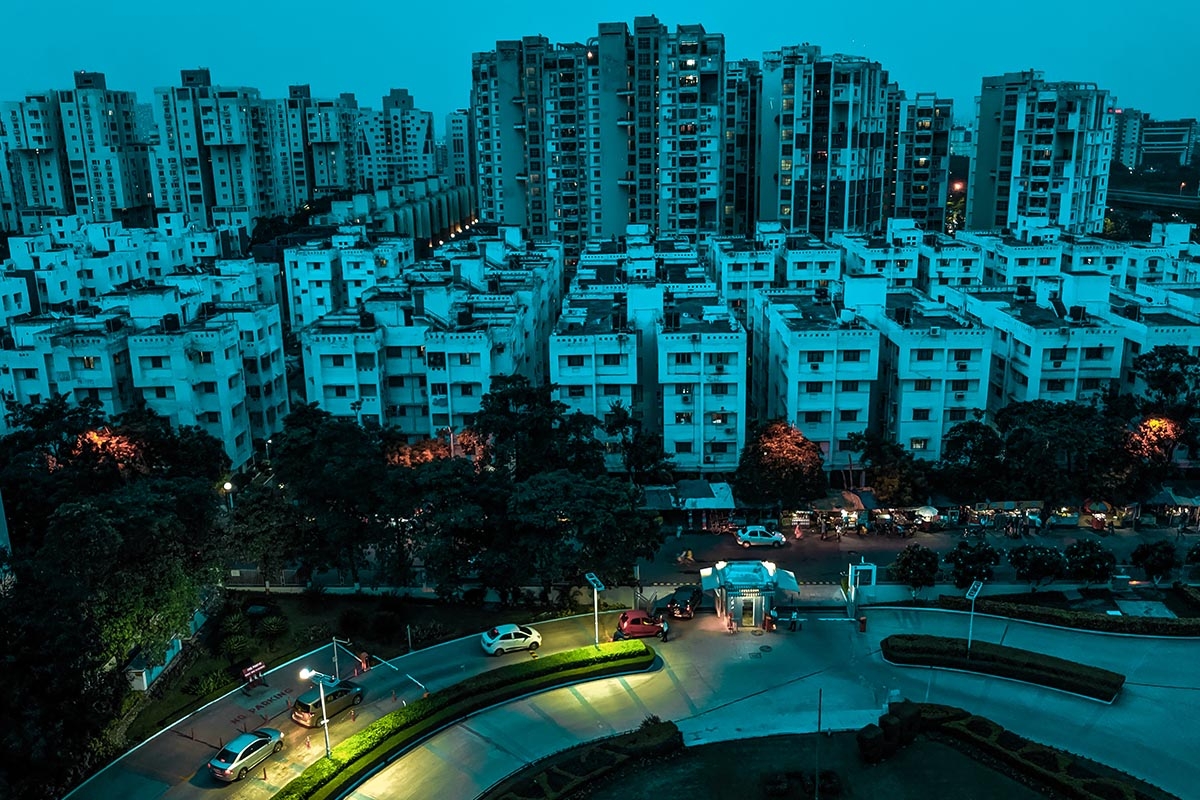
India has pledged $120billion to make its cities ‘smart’. But can such technology help the country solve its most pressing urban issues?
By Abigail Spink
Since India secured independence, the country’s urban population has steadily increased to more than 377 million and has become the centre of a booming national economy. Rural to urban migration has historically accounted for much of this growth, and it is not set to slow. The UN predicts that the country will have added 416 million people to its urban areas by 2050 and, as a result, the government is ploughing more funding than ever before into the development of its towns and cities.
In 2015, the prime minister, Narendra Modi, launched the ‘100 Smart Cities’ mission, vowing to implement smart solutions in cities across the country by 2022. The proposed model has been described by Cisco, a global leader in smart cities, as ‘a meticulously planned city that relies on ICT as an enabler to solve many of the urban problems; from the use of sensors to smart grids and data analytics that allow city infrastructure and services to meet city problems, increase efficiencies, reduce costs and enhance the quality of life’.
According to the Indian Ministry of Housing and Social Affairs, smart transformations of chosen sites will focus on:
- urban mobility by implementing intelligent traffic management and parking systems
- energy management through the construction of green buildings, smart meters and use of renewable energy
- efficient waste management through recycling, composting and monitoring water quality
- providing citizen services such as video crime monitoring and electronic service delivery
The government states that improving the core infrastructure of cities will ‘create a replicable model which will act like a lighthouse to other aspiring cities’, adding that ‘smart cities focus on their most pressing needs and on the greatest opportunities to improve lives. They always put people first.’
Achieving sustainable urban living through smart methods has nonetheless proven to be both a highly complex and controversial task. While the smart city is often pitched as an urban utopia, capable of bypassing traditional routes to urbanisation, critics are increasingly concerned about whether technology can provide a quick fix to India’s biggest urban challenges.
Diganta Das, an associate professor of geography at Nanyang Technological University in Singapore, argued in a recent publication that ‘with such a top-down approach to the planning of “smart cities”, cities tend towards becoming more elitist, primarily serving the needs of the digerati and neglecting the care for actual residents’ needs that was initially hoped for.’ He explains that the increasing involvement of private stakeholders in smart city projects risks serving primarily corporate interests, creating cities only ‘for profit’ and entrenching pre-existing power relations.
Das confirms that in order to finance development ‘up to 60 municipalities across India will begin tapping into the bond market in the next couple of years’ in accordance with government attempts to minimise the impact of urban renewal on state finances. This, he adds, indicates a worrying shift by the government away from ‘welfare-centric’ ideologies.
There are emerging doubts that smart initiatives will improve the lives of those who require the most help, namely the urban poor living in informal settlements located on city margins. Although at the smart city launch, prime minister Modi assured listeners that basic services and housing improvements would be provided to all, troubling scenes suggest that certain groups have not been sufficiently factored into development plans.
Patna, the state capital of Bihar, is one of the 100 cities selected for smart development in 2015. Of its entire population, 63 per cent of people are estimated to be living in slums. It has been reported that many of its informal settlements have been affected by land acquisition plans and the desire to aestheticise the city. The settlements Meena Bazar and Amu Kuda Basti have been bulldozed altogether, while occupants of other dwellings are falling victim to a policy that relocates them miles out of the city. Similar cases of eviction without the provision of compensation have been reported in cities such as Indore, Bhubaneswar, Delhi and Kochi. This has not only affected slum dwellers, but also farmers and tribespeople who have traditional ties to desirable sites. Ayona Datta, a reader in urban futures at King’s College London, claims that such transformation ‘excludes those who do not fit into the vision of a smart city.’
While India’s smart vision remains controversial, some experts maintain that if integrated with the aim of improving livelihoods and reducing inequalities, smart technology could be hugely beneficial. Federico Caprotti, an associate professor in human geography at the University of Exeter, explains that ‘smart technology also has the potential to bridge divides, as seen in the use of smart energy systems provided to informal settlements in countries such as South Africa and Rwanda by start-up companies such as Zonke Energy and BBOXX.’ He adds that ‘the poorest city dwellers are often migrants, and digital systems – smartphones and social media especially – often help them stay connected with their families, relatives, and friends.’
It appears that until India puts democratic development strategies into effect, the success of its smart mission will remain to be seen. Reports suggest that it is unlikely the 100 cities goal will be achieved by 2022, which for many, may buy valuable time.



